2012 Review – the London Olympics
With the London 2012 Olympic and Paralympic Games legacy now unfurling we move into planned but uncharted territory.
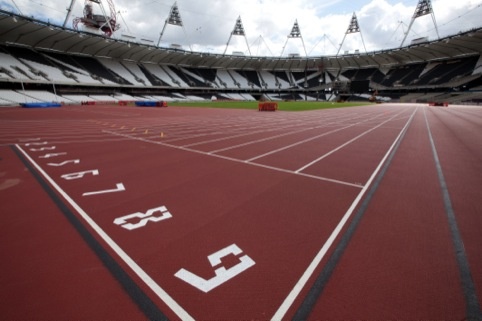
Source: Locog/Steve Bates
Inside the London 2012 Olympic Stadium
The Games was the single most important event to impact the design industry this year. In fact the briefs started coming in from the get-go in 2005 when London was announced as host city.
This year was about delivery though, starting with the potent symbolism of Danny Boyle’s opening ceremony, which was capped with the Thomas Heatherwick-designed Cauldron, kept completely secret until its unveiling on 27 July.

Source: Nick J Webb
A scene from Danny Boyle’s opening ceremony
This is quite remarkable given that it was a composition of copper petals, one of which was given to each delegation as they arrived in the UK.
At the ceremony these were laid down atop stainless steel stems, which rose to form an 8.5m-tall 16-tonne cauldron.
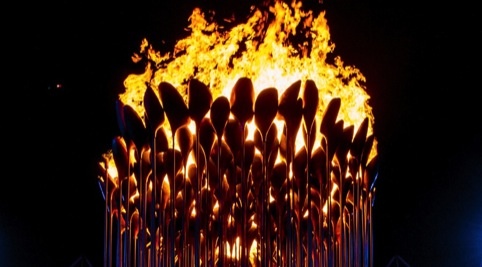
Source: Ceremonies Explorer
Thomas Heatherwick’s Olympic Cauldron is lit
When the flame was making its way around the country – a journey which began in May, it was the Barber Osgerby-designed torch that captured the country’s imagination.
The torch bore out the story if its own journey, a 1kg aluminium alloy design, punctuated with 8000 holes representing the 8000 torchbearers who would carry it.
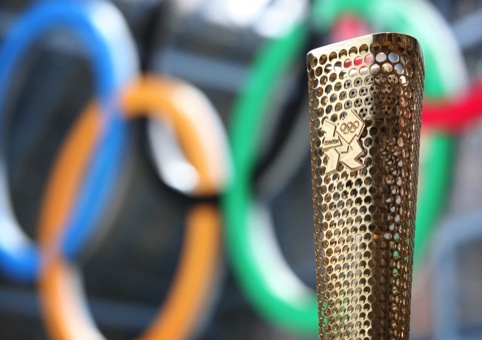
Source: Locog
Barber Osgerby’s Olympic Torch
Like these designs, the medals will remain shimmering icons of victory. The Olympic set was designed by artist David Watkins, who set the Wolff Olins-designed logo against a concave background resembling an amphitheater, a grid of lines to symbolise drawing together and outreach, and the Thames – a symbol for London and a ‘fluttering baroque ribbon,’ according to the artist.
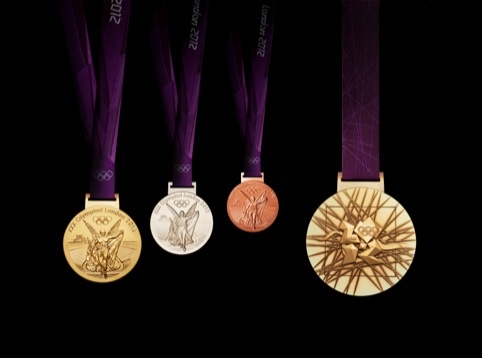
Source: Locog
The Olympic medals
The obverse side of both sets of medals depicts Nike the Greek Goddess of Victory. The reverse set of the Paralympic coin was designed by jewellery design Lin Cheung who used the canvas as a representation of forward flight, power and lightness.
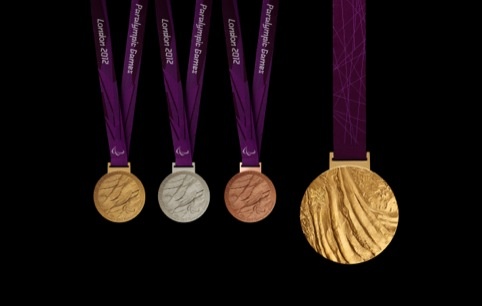
Source: Locog
The Paralympic medals
It depicts a close-up of Nike’s wing, which has been cast directly from the British Museum’s Nike of Paionios, and Sir John Sorrell, who was at the unveiling of the medals told me, ‘To take a cast from a statue in the museum – all designers would like that. It’s extraordinary design-thinking which shows a different relationship with the fabric and it will inspire athletes in the run-up.’
Love it or loathe it, the most pervasive symbol of the games was its logo, designed by Wolff Olins, which has been with us since June 2007.
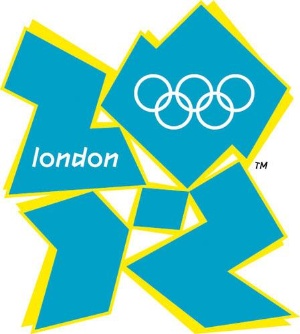
Universally panned at the time, it came in for all kinds of criticism – the most unkind being its resemblance to Lisa Simpson performing a sex act.
But as time went on it was applied to 250,000 individual designs, with guidelines in the hands of Futurebrand and Locog, and for many who cited its movement and energy, the brand worked.
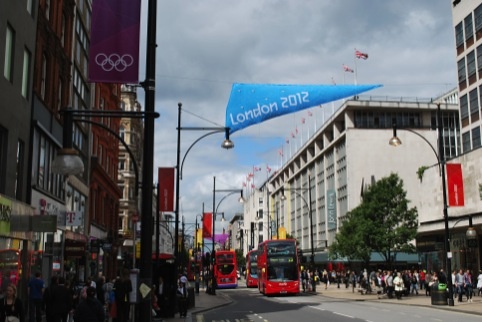
It seems to have worked particularly well on tickets in tandem with the SomeOne-designed pictograms.
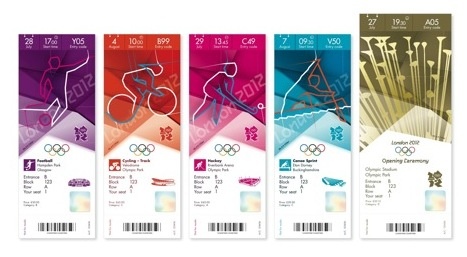
At the macro end, The Zaha Hadid-designed Aquatics Centre was praised for its architectural merit, and United Visual Artists developed a dynamic illuminated canvas for the Wilkinson Eyre Architects-designed Basketball Arena, which was clad in a light permeable membrane.
The centre-piece Olympic Stadium, designed by Populous, which is now being courted by football club West Ham, was designed with function above any aesthetic merit, and post-Games adaptability also in mind.
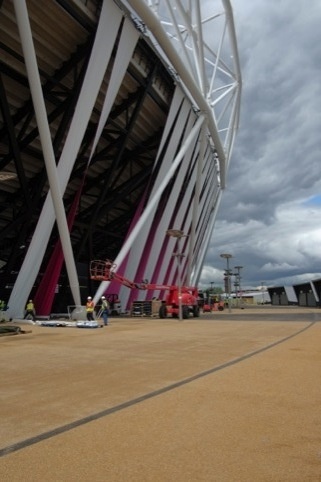
For the course of the Games though it was an amphitheatre of excitement, dressed in a stadium wrap designed by artist Sophie Smallhorn, who created 300 ‘doorways’ through vertical green, pink and orange strands.
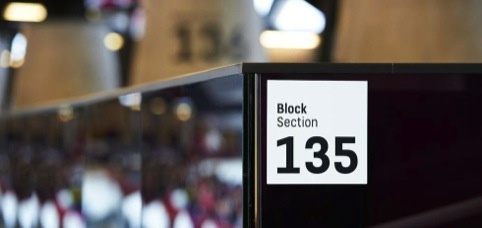
Source: Populous
Olympic Stadium wayfinding
There is hope that as well as all these lasting beacons of brilliance, like the temporary cauldron, permanent Olympic Stadium, and transformative Olympic Park, there will be further opportunities for design legacy.
Locog marketing restrictions prevented many for claiming credit for, or at least talking about their work and it would be good to see this addressed for future games or similar events.
Buoyed by the impact design made on the games, Sir Terence Conran approached Government with the idea of a ‘design mating agency’, which would match designers with venture capitalists, to build on the success of the Olympics. Government backing like this might provide design with a legacy of its own.

Greg Nugent, Former brand marketing and culture director of the London Organising Committee of the Olympic Games
‘Those beautiful medals. The cauldron. Barber Osgerby and the Olympic Torch and the hour-long queues to hold it. The Olympic Rings hanging from Tower Bridge, seconds to dream up but years to deliver. The Opening scene of Danny Boyle’s Green and Pleasant land, a sight that took the nation’s breath away. Kevin Owens and the lighting of the Olympic Park. And let’s not forget Des Smith, the gardener of the Olympic Park, responsible for a design statement that made the nation’s gardeners proud. The gold post boxes and the gold medal stamps, making it Games for everyone.
And how could we forget that logo. Evolving into a stunning ‘Look of the Games’ for every sport, every venue, every ticket, every piece of way finding and just about everything else we could find.
Evidence, if you were to need it, that London and the UK really is the most creative place on earth.’
-
Post a comment




